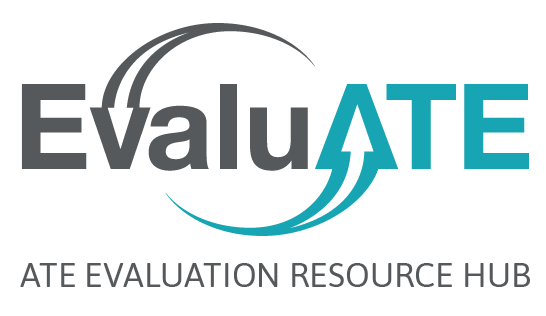
Originally published on March 14, 2017. Featured on April 15, 2021, in our Throwback Thursday series.
I attended a packed workshop by EvaluATE called “A Practical Approach to Outcome Evaluation” at the 2016 NSF ATE Principal Investigators Conference. Two lessons from the workshop reminded me that the most significant part of the evaluation process is the demystification of the process itself:
- “Communicate early and often with human data sources about the importance of their cooperation.”
- “Ensure everyone understands their responsibilities related to data collection.”
Stepping back, made me reflect upon the evolution of evaluation in the ATE community. When I first started out in the ATE world in 1995, I was on the staff of one of the first ATE centers ever funded. Back then, being “evaluated” was perceived as quite a different experience, something akin to taking your first driver’s test or defending a dissertation—a meeting of the tester and the tested.
As the ATE community has matured, so has our approach to both evaluation and the integral communication component that goes with it. When we were a fledgling center, the meetings with our evaluator could have been a chance to take advantage of the evaluation team’s many years of experience of what works and what doesn’t. Yet, at the start, we didn’t realize that it was a two-way street where both parties learned from each other. Twenty years ago, evaluator-center/project relationships were neither designed nor explained in that fashion.
Today, my colleague, Dr. Sandra Mikolaski, and I are co-evaluators for NSF ATE clients who range from a small new-to-ATE grant (they weren’t any of those back in the day!) to a large center grant that provides resources to a number of other centers and projects and even has its own internal evaluation team. The experience of working with our new-to-ATE client was perhaps what forced us to be highly thoughtful about how we hope both parties view their respective roles and input. Because the “fish don’t talk about the water” (i.e., project teams are often too close to their own work to honk their own horn), evaluators can provide not only perspective and advice but also connections to related work and other project and center principal investigators. This perspective can have a tremendous impact on how activities are carried out and on the goals and objectives of a project.
We use EvaluATE webinars like “User-Friendly Evaluation Reports” and “Small-Scale Evaluation” as references and resources not only for ourselves but also for our clients. These webinars help them understand that an evaluation is not meant to assess and critique, but to inform, amplify, modify, and benefit.
We have learned from being on the other side of the fence that an ongoing dialog, an ethnographic approach (on-the-ground research, participant observation, holistic approach), and a formative input-based partnership with our client make for a more fruitful process for everyone.

Except where noted, all content on this website is licensed under a Creative Commons Attribution-NonCommercial-ShareAlike 4.0 International License.





 EvaluATE is supported by the National Science Foundation under grant number 2332143. Any opinions, findings, and conclusions or recommendations expressed on this site are those of the authors and do not necessarily reflect the views of the National Science Foundation.
EvaluATE is supported by the National Science Foundation under grant number 2332143. Any opinions, findings, and conclusions or recommendations expressed on this site are those of the authors and do not necessarily reflect the views of the National Science Foundation.